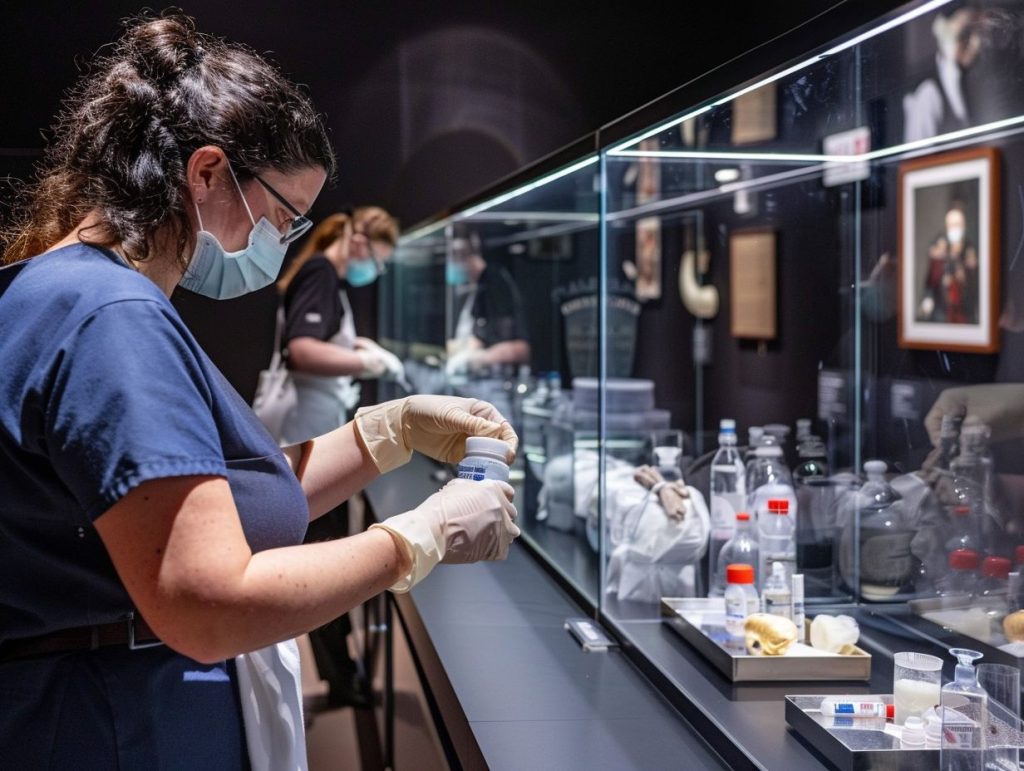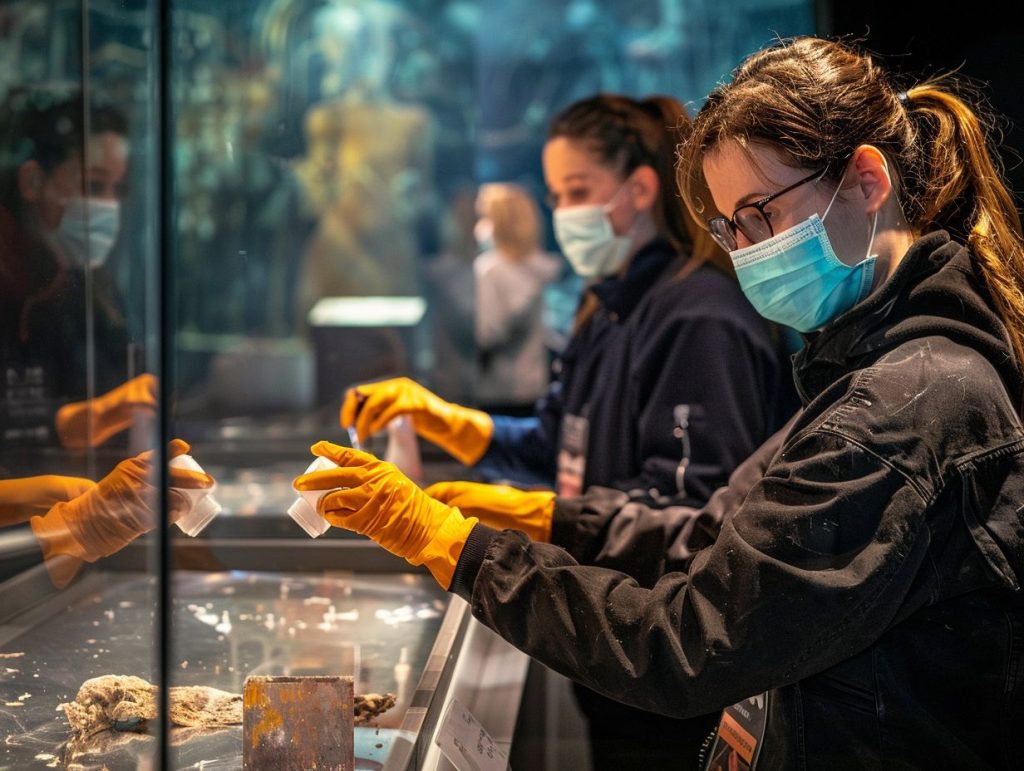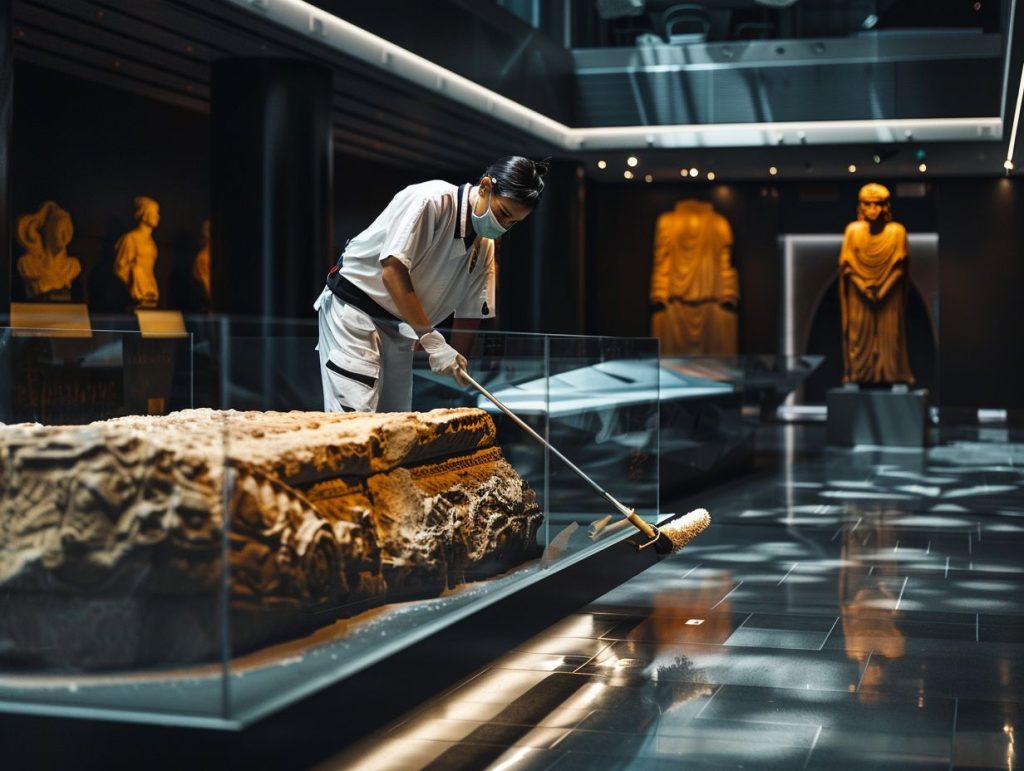Some people think small museums are easier to clean. Fewer rooms, fewer visitors, fewer problems—right? I’d love that to be true. But having worked in all sorts of places across London, I can tell you that size doesn’t always make the job easier. In fact, cleaning smaller museums often brings a different kind of pressure. You can’t hide anything. Every smudge, smear, or dusty corner becomes part of the experience.
We all know the big names—The Natural History Museum with its grand halls, or the British Museum with its endless galleries. These giants are impressive. They’ve got cleaning teams with uniforms and trolleys the size of small vans. But wander into somewhere like the Charles Dickens Museum in Bloomsbury, or the Museum of the Order of St John in Clerkenwell, and you’ll see just how tight the spaces can be. Same expectations for cleanliness, but half the room to work with.
In this article, I’m going to break down what makes cleaning smaller museums just as demanding as tackling the big ones. We’ll look at a few well-known small institutions in central London, think about visitor numbers, and talk about why grime shows up more in close quarters. I’ll also take you through the day-to-day realities—polishing floors, wiping glass, keeping the toilets fresh—because whether it’s the Tate Modern or a tiny museum above a pub, those jobs still need doing. And trust me, the mop doesn’t care how many TripAdvisor reviews your museum has.
The Small Yet Mighty Museums of Central London
You can’t swing a cat in central London without hitting something historical. It’s packed with hidden gems that most tourists walk right past. Take the Sir John Soane’s Museum in Lincoln’s Inn Fields. It’s full of paintings, architectural models, and antique furniture—crammed into Soane’s former home. Or the Cartoon Museum in Fitzrovia, with wall-to-wall art on display and barely an inch to spare between exhibits.
Then you’ve got the Charles Dickens Museum, which is inside the writer’s actual house, and the Museum of the Order of St John, a medieval treasure tucked away in Clerkenwell. These places might not have towering dinosaur skeletons or Rosetta Stones, but they’re just as loved by those who find them.
Compared to giants like the Natural History Museum (with over 80 million items) or the British Museum (sprawling across multiple floors), these smaller spots could fit in the corner of one of their grand galleries. But the smaller square footage doesn’t mean less work. If anything, it means more focus on detail.
Where a large museum has cleaning zones and rotating crews, many of these small places rely on a handful of staff or contracted cleaners. There’s no room for a trolley in those narrow hallways. You have to be smart, quick, and respectful—especially when you’re dusting Victorian chairs or vacuuming under priceless Persian rugs.
High Footfall, Tight Quarters: The Cleaning Challenge
Plenty of small museums pull in serious numbers. The Churchill War Rooms, for example, stay packed all year round. Tourists queue to get in, and once inside, they shuffle through tight corridors barely wide enough for a pushchair. That’s a cleaning headache just waiting to happen.
Unlike vast halls where people are spread out, smaller museums concentrate everyone in the same spots. Think of a doorway touched by thousands of hands each week. Or a glass display at child height, forever covered in tiny fingerprints. The contact points are constant, and in a smaller space, they multiply fast.
You might clean a handrail in the British Museum once every couple of hours. In a smaller place, you might need to do it every thirty minutes. There’s simply no buffer. No area goes untouched for long. And visitors tend to linger—spending more time face-to-face with the objects. That means longer exposure to every mark or speck.
One spilt drink in a big gallery might go unnoticed. In a tight Georgian drawing room turned exhibition space, it becomes a crisis. Small museums are intimate—and intimacy means scrutiny. So cleaners have to stay alert, especially during busy periods. It’s a constant game of catch-up.
Grime Has Nowhere to Hide
Walk through the main hall of the British Museum and your eyes are drawn up—towards the dome, the vast ceiling, the pillars. A dusty skirting board here or a fingerprint on the lift button? Nobody notices. There’s just too much to look at.
But in a smaller museum, everything is at eye level. Visitors are close to the objects, the walls, the floor. They spot the tiniest things. A coffee ring on a glass display case. A single cobweb in the corner. A smudge on the loo mirror. These things get mentioned in reviews. Worse—they get tweeted with photos.
It’s like hosting guests in a small flat. You know every detail counts. You scrub more, not less, because there’s no margin for mess. I once cleaned a Victorian museum kitchen with ceramic floors and open shelves. If a single crumb dropped onto a copper pan, you had to catch it before someone else did.
The same goes for smells. In bigger museums, odours spread and vanish. In small ones, they hang about. You need good ventilation and quick response times. If the loos aren’t cleaned properly—or if damp gets in somewhere—it doesn’t take long for people to start wrinkling their noses.
The Rules Don’t Change, No Matter the Size
It might be tempting to think that a small museum doesn’t need the full works. But that’s not how it goes. You still polish the hard floors. You still mop the loos. You still clean the glass. The public expects the same standard, no matter the square footage.
Even if there’s just one display room, it has to shine. That includes dusting picture frames, buffing brass handles, and wiping light switches. The Old Operating Theatre Museum, for instance, sits above a church and involves narrow wooden stairs, worn floorboards, and delicate antique tools. None of that can be rushed or skipped. You’ve got history under your hoover.
And it’s not just about appearances. Museums protect objects. Dirty floors mean grit, which can scratch wood. Sticky fingers leave behind residue that attracts pests. Moisture from poorly ventilated loos can damage paper or fabric exhibits. Cleaning isn’t just about being tidy—it’s about preserving.
Even if you’re dealing with a few square metres, it’s still your job to keep them safe. Sometimes, that means arriving before opening hours with a silent hoover. Other times, it means working quietly around visitors, nodding politely as you sneak past with a cloth and a bottle of polish.
Why Small Museums Deserve Big Respect
I’ve cleaned the marble floors of large art museums and wiped down the cramped stairwells of lesser-known institutions. The work doesn’t get easier just because the postcode is obscure or the budget’s a bit leaner. If anything, it gets harder.
There’s pride involved. Smaller museums are often run by passionate staff who notice everything. They know the history of every item and will absolutely spot if someone’s been careless with a cleaning spray. You have to be as careful as a curator and as thorough as a forensic team.
So next time you visit a museum—big or small—spare a thought for the cleaning staff. If it looks spotless, that’s no accident. Someone was up early, or stayed late, to make sure you could admire the exhibits without seeing yesterday’s sandwich wrapper in the corner.
Whether it’s the echoing halls of Kensington or a candle-lit room above a pub in Holborn, the job stays the same. Dust doesn’t discriminate. Neither does responsibility. And if you ask me, those tight corners and awkward staircases of small museums deserve just as much respect—and just as much cleaning—as anywhere else in London.


